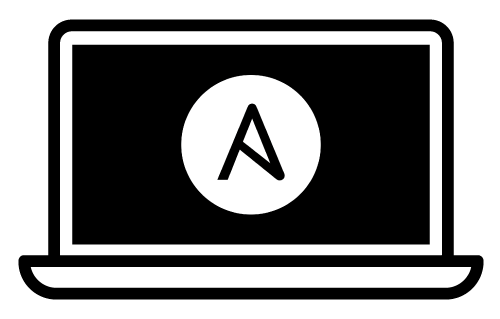https://github.com/geerlingguy/mac-dev-playbook
Mac setup and configuration via Ansible.
https://github.com/geerlingguy/mac-dev-playbook
ansible automation developer homebrew mac macos playbook setup
Last synced: 8 months ago
JSON representation
Mac setup and configuration via Ansible.
- Host: GitHub
- URL: https://github.com/geerlingguy/mac-dev-playbook
- Owner: geerlingguy
- License: other
- Created: 2014-02-12T16:29:15.000Z (almost 12 years ago)
- Default Branch: master
- Last Pushed: 2025-04-19T20:46:36.000Z (9 months ago)
- Last Synced: 2025-04-23T17:50:36.033Z (9 months ago)
- Topics: ansible, automation, developer, homebrew, mac, macos, playbook, setup
- Language: Shell
- Homepage:
- Size: 271 KB
- Stars: 6,404
- Watchers: 159
- Forks: 1,850
- Open Issues: 8
-
Metadata Files:
- Readme: README.md
- Funding: .github/FUNDING.yml
- License: LICENSE
Awesome Lists containing this project
- Self-Hosting-Guide - Mac Development Ansible Playbook by Jeff Geerling
- awesome-starred-test - geerlingguy/mac-dev-playbook - Mac setup and configuration via Ansible. (Shell)
- awesome-list-ansible - mac-dev-playbook
- stars - mac-dev-playbook
README

# Mac Development Ansible Playbook
[![CI][badge-gh-actions]][link-gh-actions]
This playbook installs and configures most of the software I use on my Mac for web and software development. Some things in macOS are slightly difficult to automate, so I still have a few manual installation steps, but at least it's all documented here.
## Installation
1. Ensure Apple's command line tools are installed (`xcode-select --install` to launch the installer).
2. [Install Ansible](https://docs.ansible.com/ansible/latest/installation_guide/index.html):
1. Run the following command to add Python 3 to your $PATH: `export PATH="$HOME/Library/Python/3.9/bin:/opt/homebrew/bin:$PATH"`
2. Upgrade Pip: `sudo pip3 install --upgrade pip`
3. Install Ansible: `pip3 install ansible`
3. Clone or download this repository to your local drive.
4. Run `ansible-galaxy install -r requirements.yml` inside this directory to install required Ansible roles.
5. Run `ansible-playbook main.yml --ask-become-pass` inside this directory. Enter your macOS account password when prompted for the 'BECOME' password.
> Note: If some Homebrew commands fail, you might need to agree to Xcode's license or fix some other Brew issue. Run `brew doctor` to see if this is the case.
### Use with a remote Mac
You can use this playbook to manage other Macs as well; the playbook doesn't even need to be run from a Mac at all! If you want to manage a remote Mac, either another Mac on your network, or a hosted Mac like the ones from [MacStadium](https://www.macstadium.com), you just need to make sure you can connect to it with SSH:
1. (On the Mac you want to connect to:) Go to System Preferences > Sharing.
2. Enable 'Remote Login'.
> You can also enable remote login on the command line:
>
> sudo systemsetup -setremotelogin on
Then edit the `inventory` file in this repository and change the line that starts with `127.0.0.1` to:
```
[ip address or hostname of mac] ansible_user=[mac ssh username]
```
If you need to supply an SSH password (if you don't use SSH keys), make sure to pass the `--ask-pass` parameter to the `ansible-playbook` command.
### Running a specific set of tagged tasks
You can filter which part of the provisioning process to run by specifying a set of tags using `ansible-playbook`'s `--tags` flag. The tags available are `dotfiles`, `homebrew`, `mas`, `extra-packages` and `osx`.
ansible-playbook main.yml -K --tags "dotfiles,homebrew"
## Overriding Defaults
Not everyone's development environment and preferred software configuration is the same.
You can override any of the defaults configured in `default.config.yml` by creating a `config.yml` file and setting the overrides in that file. For example, you can customize the installed packages and apps with something like:
```yaml
homebrew_installed_packages:
- git
- go
mas_installed_apps:
- { id: 443987910, name: "1Password" }
- { id: 498486288, name: "Quick Resizer" }
- { id: 557168941, name: "Tweetbot" }
- { id: 497799835, name: "Xcode" }
composer_packages:
- name: hirak/prestissimo
- name: drush/drush
version: '^8.1'
gem_packages:
- name: bundler
state: latest
npm_packages:
- name: webpack
pip_packages:
- name: mkdocs
configure_dock: true
dockitems_remove:
- Launchpad
- TV
dockitems_persist:
- name: "Sublime Text"
path: "/Applications/Sublime Text.app/"
pos: 5
```
Any variable can be overridden in `config.yml`; see the supporting roles' documentation for a complete list of available variables.
## Included Applications / Configuration (Default)
Applications (installed with Homebrew Cask):
- [ChromeDriver](https://sites.google.com/chromium.org/driver/)
- [Docker](https://www.docker.com/)
- [Dropbox](https://www.dropbox.com/)
- [Firefox](https://www.mozilla.org/en-US/firefox/new/)
- [Google Chrome](https://www.google.com/chrome/)
- [Handbrake](https://handbrake.fr/)
- [Homebrew](http://brew.sh/)
- [LICEcap](http://www.cockos.com/licecap/)
- [nvALT](http://brettterpstra.com/projects/nvalt/)
- [Sequel Ace](https://sequel-ace.com) (MySQL client)
- [Slack](https://slack.com/)
- [Sublime Text](https://www.sublimetext.com/)
- [Transmit](https://panic.com/transmit/) (S/FTP client)
Packages (installed with Homebrew):
- autoconf
- bash-completion
- doxygen
- gettext
- gifsicle
- git
- gh
- go
- gpg
- httpie
- iperf
- libevent
- sqlite
- nmap
- node
- nvm
- php
- ssh-copy-id
- readline
- openssl
- pv
- wget
- wrk
- zsh-history-substring-search
My [dotfiles](https://github.com/geerlingguy/dotfiles) are also installed into the current user's home directory, including the `.osx` dotfile for configuring many aspects of macOS for better performance and ease of use. You can disable dotfiles management by setting `configure_dotfiles: no` in your configuration.
Finally, there are a few other preferences and settings added on for various apps and services.
## Full / From-scratch setup guide
Since I've used this playbook to set up something like 20 different Macs, I decided to write up a full 100% from-scratch install for my own reference (everyone's particular install will be slightly different).
You can see my full from-scratch setup document here: [full-mac-setup.md](full-mac-setup.md).
## Testing the Playbook
Many people have asked me if I often wipe my entire workstation and start from scratch just to test changes to the playbook. Nope! This project is [continuously tested on GitHub Actions' macOS infrastructure](https://github.com/geerlingguy/mac-dev-playbook/actions?query=workflow%3ACI).
You can also run macOS itself inside a VM, for at least some of the required testing (App Store apps and some proprietary software might not install properly). I currently recommend:
- [UTM](https://mac.getutm.app)
- [Tart](https://github.com/cirruslabs/tart)
## Ansible for DevOps
Check out [Ansible for DevOps](https://www.ansiblefordevops.com/), which teaches you how to automate almost anything with Ansible.
## Author
This project was created by [Jeff Geerling](https://www.jeffgeerling.com/) (originally inspired by [MWGriffin/ansible-playbooks](https://github.com/MWGriffin/ansible-playbooks)).
[badge-gh-actions]: https://github.com/geerlingguy/mac-dev-playbook/actions/workflows/ci.yml/badge.svg
[link-gh-actions]: https://github.com/geerlingguy/mac-dev-playbook/actions/workflows/ci.yml